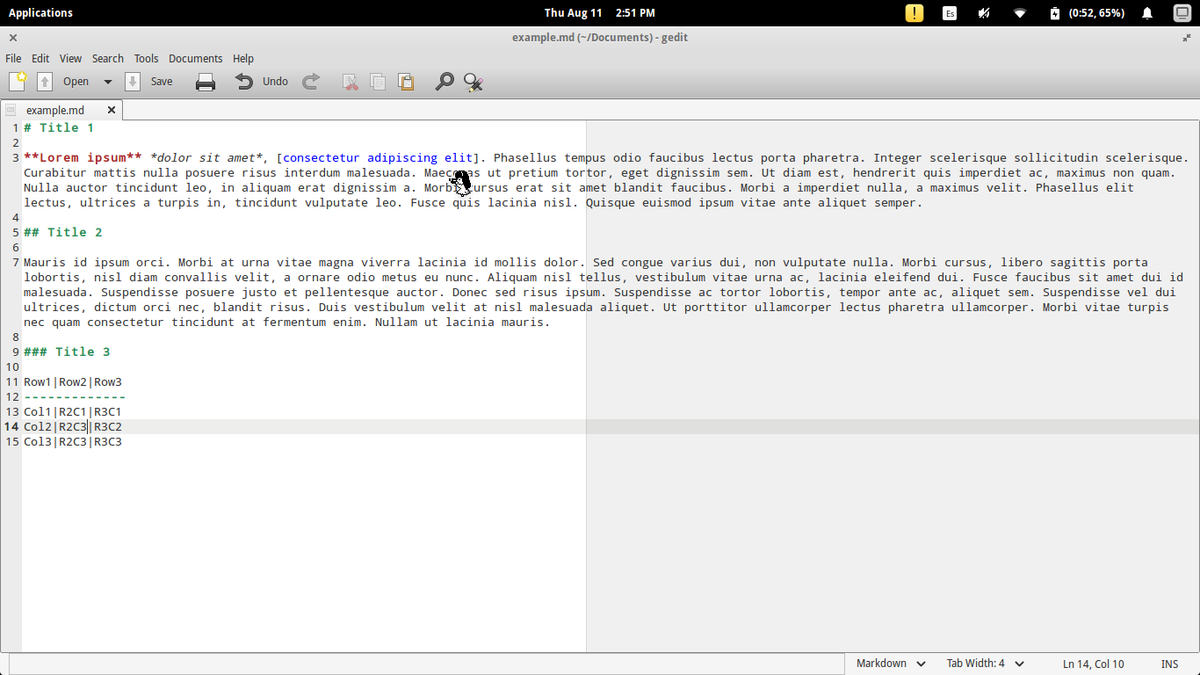The basic Markdown syntax allows you to create code blocks by indenting lines by four spaces or one tab. If you find that inconvenient, try using fenced code blocks. Depending on your Markdown processor or editor, you’ll use three backticks ( ```) or three tildes ( ) on the lines before and after the code block.
Monday, 29 February, 2016
- README.md (or a different file extension if you choose to use a non-Markdown file format). It is traditionally uppercase so that it is more prominent, but it's not a big deal if you think it looks better lowercase.
- Creates a directory or subdirectory. Command extensions, which are enabled by default, allow you to use a single md command to create intermediate directories in a specified path.
- This batch command creates a new directory in the current location. Syntax md new directory name Example @echo off md newdir cd newdir cd Rem “Goes back to the parent directory and create 2 directories” cd. Md newdir1 newdir1 cd newdir1 cd cd. Cd newdir2 cd Output. The above command produces the following output.
- While Markdown’s syntax has been influenced by several existing text-to-HTML filters, the single biggest source of inspiration for Markdown’s syntax is the format of plain text email. The best way to get a feel for Markdown’s formatting syntax is simply to look at a Markdown-formatted document.

Markdown is a popular text formatting syntax among developers these days. Popular Sites like Github or Bitbucket use Markdown for project documentation and various other types of user generated content. These sites automatically convert markdown syntax to HTML, so it can be displayed in a browser.
However, maybe you want to use Markdown as document format without using a platform that does the conversion for you. Or you are in need of an output format other than HTML. In this case you need a tool that can convert markdown to the desired target format. Pandoc is is a document conversion tool that can be used for exactly this (and a lot of other things). With Pandoc you can convert Markdown documents to PDF, HTML, Words DOCX or many other formats.
After installing Pandoc, you can simply run it from command line.
Note: By default, Pandoc uses LaTeX to generate PDF documents. So, if you want to generate PDF documents, you need to install a LaTex processor first (list of required LaTeX packages).

To convert a doc.md Markdown file into a PDF document, the following command can be used:
Pandoc is able to merge multiple Markdown files into a single PDF document. To generate a single PDF document out of two Markdown files you can use:
By default the page margins in the resulting PDF document are quite large. You can change this by passing a margin parameter:
To create HTML or DOCX documents you simply have to change the file extension of the target file:
The resulting documents are well formatted. The following two screenshot show a DOCX and a PDF document created out of two small example markdown files:
Resulting DOCX document:
Resulting PDF document:
Comments
Free film ukuran file kecil. 'By default, Pandoc uses LaTeX to generate PDF documents.' can CSS be used to style pdfs? Counter strike condition zero for mac free download.
Hi, Michael! If you need to convert Markdown file to DOCX, you can use Writage plugin for MS Word. It allows to open, edit and save your MD files as DOCX (or DOCX as MD files) from the MS Word.
Leave a reply
You can write content in regular Markdown files (e.g., files ending in .md).Jupyter Book supports any Markdown syntax that is supported by Jupyter notebooks.Jupyter Notebook Markdown is an extension of a flavour of Markdown calledCommonMark Markdown.It has many elements for standard text processing, though it lacks a lot of features used forpublishing and documentation.
Note
If you’d like a more in-depth overview and guide to CommonMark Markdown, seethe CommonMark Markdown tutorial.
This page describes some basic features of the Jupyter Notebook Markdown, and how toinclude them with your book.
Embedding media¶
Adding images¶
You can reference external media like images from your Markdown file. If you userelative paths, then they will continue to work when the Markdown files are copied over,so long as they point to a file that’s inside of the repository.
Here’s an image relative to the book content root
It was generated with this code:

See also
Images and figures for more information.
Adding movies¶
You can even embed references to movies on the web! For example, here’s a little GIF for you!
This will be included in your book when it is built.
Mathematics¶
For HTML outputs, Jupyter Book uses the excellent MathJax library,along with the default Jupyter Notebook configuration, for rendering mathematics from LaTeX-style syntax.
For example, here’s a mathematical expression rendered with MathJax:
Block-level mathematics¶
Md File Code Snippet
You can include block-level mathematics by wrapping your formulas in $$ characters.For example, the following block:
Results in this output:
You can also include math blocks by using LaTeX-style syntax using begin{align*}.For example, the following block:
Results in:
Important Hp 1018 driver for mac.
This requires the amsmath MyST extension to be enabled.
Markdown Editor
Extended Markdown with MyST Markdown¶

Md File Syntax Code Block
In addition to CommonMark Markdown, Jupyter Book also supports a more fully-featured version of Markdown called MyST Markdown.This is a superset of CommonMark that includes syntactic pieces that are useful for publishing computational narratives.For more information about MyST Markdown, see MyST Markdown overview.
